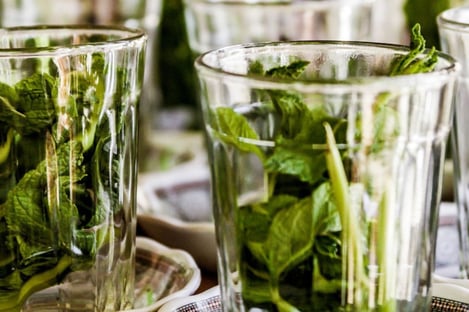Language
Currency
With tea-drinking so deeply ingrained in Moroccan culture, one might think that the tradition has its roots in ancient times. It is, however, a relatively recent phenomenon.
Although the oldest Arab-written texts to mention tea date back to the 9th century it wasn't until the 16th century that tea travelled regularly from China to the Middle East (Egypt, Pakistan, Iran and the Arabian Peninsula in particular). However, it was yet to reach Morocco. How it finally did remains a point of contention, with a number of explanations springing up. Of the most popular claims two stand out: one is that it was introduced to Morocco by Queen Anne of England in the 17th century. Queen Anne was a keen tea drinker, and she sent a gift of tea to the Moroccan Sultan Moulay Ismail in the hope of encouraging the release of British prisoners of war. The Sultan was so impressed with the tea that he introduced it to his court, and it quickly spread throughout Morocco.
Another equally plausible version of events is that it was the British East India Company that encouraged its diffusion throughout the country, after setting up a trading post in the beautiful port city of Essaouira in the 19th century. The Moroccans, who already consumed a lot of mint, decided to combine the two et voila. Whatever the true version of events, mint tea has only been consumed en masse since the 19th century.
Today, offering a mint tea to your guests is an almost obligatory gesture to demonstrate your hospitality and in turn, for a guest to refuse a glass of tea represents the height of impoliteness. There is a Tuareg proverb that says "It takes three conditions to make tea: time, embers and friends".
In Morocco, it is the men who prepare the tea, according to a specific procedure: the leaves are "washed" in hot water to remove the tannin, a substance that gives the tea its bitter taste. Then it is brewed before being served, when it is poured from above (something Moroccans do so skilfully), allowing it to become oxygenated so as to reveal all its aromas. Tea is served three times before changing the leaves, giving rise to a popular saying: "The first glass is bitter like life, the second is as sweet as love and the third is as soothing as death". We know which glass we'd opt for!
Mint tea is drunk throughout the Maghreb, or Northern Africa, but the practices and preparation differ from country to country and from person to person. Some people prefer to add a little more or less sugar or to serve tea with a mint leaf in the glass.
In Tunisia, for example, pine nuts are added to the tea to enhance the flavour of the beverage. In the Taliouine region, where saffron is produced, the inhabitants add some strands of the precious spice to their tea at the beginning of the preparation. The Berbers, meanwhile, add many aromatic plants to their tea.
To taste an authentic version of a cup of Moroccan mint tea, prepared by experts, head to a tea room, where you can get enjoy your tea with a pastry and experience a true Moroccan tea ceremony, prepared the traditional way.
A must-visit in Marrakech, the world-famous Pâtisserie des Princes is frequented by tourists and locals alike, a testament to the quality of its pastries and tea. A stone's throw from Jemaa el-Fna Square, take a break and enjoy local delicacies, such as gazelle horns scented with orange blossom, chebakias or baklavas bursting with sugar and marzipan. Remember to bring a plastic box if you plan to bring pastries back home after your trip. The pastries are sold at around 20€ per kilo.
For tea lovers, it is possible to prepare Moroccan mint tea at home.






